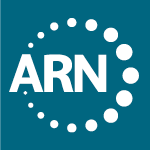Concurrent Sessions Cover a Myriad of Topics
Below is a listing of concurrent sessions from ARN's 2018 conference. Review it to read about our great educational sessions from 2018 or learn about the ARN REACH Annual Meeting.
All concurrent sessions provide 1 CH when attended and evaluation is completed.
Shared Decision Making (SDM) as a Standard of Care [201]
October 18, 2018, 11 am–Noon

Terrie Black, DNP MBA CRRN FAHA FAAN
Clinical Assistant Professor
University of Massachusetts
Mars, PA
Description
What is Shared Decision Making (SDM)? What role does the rehabilitation nurse have with the SDM process? Terrie defined what SDM is and the fundamental components to guide SDM in rehabilitation practice.
Learning Objectives
- Define Shared Decision Making (SDM)
- List six fundamentals to guide SDM in rehabilitation practice
- Apply SDM to a case study
Yoga and Meditation for TBI: Evidence, Innovations, and Ways Forward [202]
October 18, 2018, 11 am–Noon

Kyla Pearce, MPH CBIS RYT-200
Senior Director
Dartmouth College
Norwich, VT
Description
Yoga, a form of complementary and alternative medicine, has been shown to improve outcomes in a broad array of clinical populations, yet has not been used widely among the TBI population. The LoveYourBrain Foundation is changing this paradigm through a yoga program for people with TBI and their caregivers. During this program Kyla integrated breathing exercises, gentle yoga, guided meditation, and group discussion. The Foundation has partnered with 28 yoga studios and three rehabilitation facilities across 16 states and three Canadian provinces. Participants (n=247) reported significant improvements in quality of life from baseline (41.5 SD=17.4) to post-series (53.1 SD=18.6, p<0.001) on the Quality of Life after Brain Injury scale, as well as in resilience, positive affect, and cognition using valid and reliable NIH TBI-specific scales. Given the potential impact of yoga for TBI rehabilitation, better understanding of the evidence and recent innovations in this area is warranted among TBI survivors, caregivers, and rehabilitation professionals. Kyla described the evidence-based benefits of yoga and meditation for TBI rehabilitation, guided TBI-friendly yoga and meditation practices ready for use in clinical practice, and the delivery of community-based yoga rehabilitation services throughout the United States.
Learning Objectives
- Describe the evidence-based benefits of yoga and meditation for TBI rehabilitation and key modifications to improve safety and accessibility
- Guide clinically relevant, TBI-friendly yoga (e.g., chair yoga) and meditation practices (e.g., visualization, body scan, and progressive relaxation)
- Describe interprofessional collaborations between nurses and yoga teachers to facilitate community reintegration for people with TBI
Addressing Sex and Intimacy: Patient Education Resources Make It Easy [203]
October 18, 2018, 11 am–Noon
Donald Kautz, RN PhD CRRN
Retired, Associate Professor Emeritus
University of North Carolina Greensboro
Winston Salem, NC
Description
Patients with many different disabilities (spinal cord injury, head injury, stroke, hip fracture, chronic pain, etc.) and chronic illnesses (diabetes, heart disease, cancer, etc.), and their partners often have concerns about engaging in sex and maintaining intimacy. During this session Don taught participants how to use the PLISSIT model to address sexual concerns. Additionally, he provided educational resources from reputable medical and patient advocacy sites to take back and use in practice. Don also examined the importance of the nurse’s role within the interdisciplinary team.
Learning Objectives
- Utilize the PLISSIT model for addressing sex and intimacy concerns
- Utilize appropriate patient education resources with patients and their partners
Advocating the Value and Role of Rehabilitation Nurses [204]
October 18, 2018, 11 am–Noon

Sarah Nichelson, JD
Health Policy and Advocacy Manager
Association of Rehabilitation Nurses
Chicago, IL

Jeremy Scott, MA
Government Relations Director
Drinker Biddle
Washington, DC
Maria Radwanski, MSN RN CRRN
Chief Operating Officer
Health Calls Home Health Agency
Wyomissing, PA
Description
ARN's Government Relations team walked through ARN's Health Policy and Legislative Agenda and what steps are being taken to address pertinent issues in Washington, D.C.
Learning Objectives
- Identify and discuss ARN health policy and advocacy issues
- Describe ARN's health policy activities in relation to rehabilitation nursing practice
- Discuss opportunities to support ARN's Health Policy Agenda
Assisted Animal Therapy and Technologies to Help People with Disabilities [401]
October 19, 2018, 11:20 am - 12:20 pm

Deena Hoagland, LCSW
Director
Island Dolphin Care
Key Largo, FL
Description
During this session Deena covered assisted therapy programs for children and adults with special needs through the use of innovative therapy techniques. Educational dolphin-assisted therapy and speech activated technologies enable participants to discover and achieve desired goals, strengths, and their maximum potential for individual fulfillment. Island Dolphin Care, located in Key Largo, Florida, has licensed and certified staff to provide therapy in unique ways to motivate and support each patient.
Learning Objectives
- Identify information about speech activated technologies
- Demonstrate how speech activated technology can be utilized to assist in communicating with nonverbal patients
At the Heart of the Matter - Cardiovascular Disease Prevention 2018 [402]
October 19, 2018, 11:20 am - 12:20 pm

David Perloff, MD
Director of Cardiology
Florida Medical Center
Ft. Lauderdale, United States
Description
David outlined important cardiovascular disease prevention paradigms for the Cardiac Rehab Professional.
Learning Objectives
- Understand the epidemiology and pathophysiology of cardiovascular disease
- Learn the principles of primary and secondary prevention of cardiovascular disease
- Recognize new, updated hypertension and hyperlipidemia guidelines
Fall Risk in Cancer Survivors: Examining the Evidence [403]
October 19, 2018, 11:20 am - 12:20 pm

Grace Campbell, PhD, MSW RN CNL CRRN
Assistant Professor
University of Pittsburgh School of Nursing
Allison Park, PA
Description
Individuals with a history of cancer are at high risk of falls and injuries, both during active treatment and for years afterward. As many as 50% of individuals with cancer have sustained one or more falls since their diagnosis, but the reasons for this increased fall risk are not well understood. Fall risk factors in the general older adult population (e.g. older age, gender, cognitive impairment, depression, comorbidities, and medications) do not consistently explain fall risk in cancer survivors. Further, there is little consensus regarding effective fall prevention interventions in this population, and little research in this area. During this presentation, Grace examined the latest evidence regarding fall risk factors and fall risk assessment among cancer survivors, discussed potential fall prevention interventions, and identified evidence gaps and future directions for research and clinical care.
Learning Objectives
- Identify at least three factors that place cancer survivors at increased risk of falls
- Discuss key components of an evidence-based fall risk assessment in individuals with cancer
Caring for LGBTQIA+ Identified Patients 101 [404]
October 19, 2018, 11:20 am - 12:20 pm

Libby Parker, MSS
PRIDE Program Manager and Outpatient Therapist
Bryn Mawr College Graduate School of Social Work and Social Research
Philadelphia, PA
Description
According to national research, individuals who identify as LGBTQIA+ are more likely to experience discrimination in healthcare settings. In a 2010 survey conducted by Lambda Legal, 70% of transgender respondents and almost 56% of lesbian, gay, and bisexual research participants reported experiencing at least one instance of discrimination while trying to access health services. In a similar analysis conducted by the National Center for Transgender Equality, in partnership with the National Gay and Lesbian Task Force, 19% of the trans-identified respondents described outright denial to health care because of their gender identity. As a result, there are significant health disparities for LGBTQIA+ identified people.
During this workshop, attendees gained insight and skills to support their LGBTQIA+ identified patients. They developed their own strategies for acknowledging, confronting, and challenging biases that may lead to discriminatory healthcare practices. Participants were offered tools to improve their practice, including support in examining and expanding the language they use to discuss gender and sexuality in healthcare settings.
Learning Objectives
- Examine and expand the language we use to discuss gender and sexuality
- Describe how gender identity and sexual orientation impact access to health care
- Develop a strategy to acknowledge, confront, and challenge our biases
Patients Moving NOT Moving Patients: Therapeutic Transfers in Neurorehabilitation [501]
October 19, 2018, 3:30–4:30 pm

Jason Knox, PT C/NDT
Physical Therapist
Alberta Health Services
Calgary (Alberta), Canada
Description
Transferring and moving patients are among the most frequent of tasks that occur throughout every shift and serve as both an opportunity for patient recovery of independent function, and a potential risk for nurse injury. Recognizing that our brains change with every experience and repetition, transfers are often the most commonly repeated physical activities that patients perform in their day. These can include moving from their wheelchair to a commode, bed, chair, and even standing up to walk or go somewhere. Each repetition can either strengthen pathways and neural networks to re-map the brain in a positive way or it can, unfortunately, reinforce bad habits, compensations, and negative plasticity which ultimately limits and complicates recovery. Applying this knowledge along with other therapeutic principles, however, does not just help the patient … it can help you too! Setting the transfer up in such a way as to optimize the patient’s central nervous system and their participation more effectively will enhance their contribution and, therefore, reduce the amount of effort and assistance you are required to provide. During this session, attendees experienced the difference it makes when you practice hands-on techniques with each other, and discovered how to eliminate the word “lift” from their practice and vocabulary.
Learning Objectives
- Analyze normal components of movement when transferring someone from a wheelchair to a commode, bed, chair, or even while standing up to walk
- Facilitate active movement, rather than lifting or passively moving body parts when providing assistance
- Practice effectively and therapeutically performing a transfer in order to promote recovery of function
From Yesterday's Practice to Today's Evidence [502]
October 19, 2018, 3:30-4:30 pm

Terrie Black, DNP MBA CRRN FAHA FAAN
Clinical Assistant Professor
University of Massachusetts
Mars, PA
Description
Rehabilitation nurses have a wealth of knowledge and expertise. Yet many times, clinical practice is based upon “because we've always done it that way.” During this session Terrie provided practical tips for improving care to be efficient and effective through evidence-based practice.
Learning Objectives
- Define evidence-based practice (EBP)
- Identify a framework to use for implementing EBP at one's facility
- State resources to support EBP
The Agitated TBI Patient: A Case Study [503]
October 19, 2018, 3:30- 4:30 pm

Angela Hathaway, MSN RN CRRN
Tower Health
Sinking Spring, PA
Description
Caring for the patient after traumatic brain injury (TBI) has many challenges. During this workshop, Angela took attendees through an interdisciplinary case study that provided a review of TBI, she discussed statistics for brain injury cases, defined the functions of the lobes of the brain, and provided interventions for the agitated patient at various levels of the Rancho Los Amigos Scale. The case study introduced a 29-year-old male, referred to as Jeff, who was admitted to the TBI unit after suffering multiple injuries during a motorcycle accident. Jeff’s recovery was one of the most challenging experiences Angela's team had ever faced due to his agitated and combative status. The case study assisted nurses to identify triggers for behavioral outbursts and it discussed measures to safely de-escalate these behaviors.
This interdisciplinary approach allowed for the healthcare team to successfully manage behaviors and provide caregivers the education necessary to safely discharge this patient to home. Follow up appointments and therapy was provided, along with offering support group for TBI survivors, and a “TBI 101” class was offered to the family to assist with coping and understanding TBI.
Learning Objectives
- Explain patient’s cognitive and behavioral status at different stages of the Rancho Los Amigos Scale
- Discuss Rehabilitative Care: pharmaceutical and non-pharmaceutical interventions
- Evaluate a team approach to caring for an agitated patient with a brain injury
Author! Author! Strategies for Developing an Exceptional Manuscript [504]
October 19, 2018, 3:30 - 4:30 pm

Kris Mauk, PhD DNP RN CRRN GCNS-BC GNP-BC ACHPN FAAN
Editor-in-Chief, Rehabilitation Nursing Journal
President, International Rehabilitation Consultants
Senior Care Central, LLC
Description
This interactive session focused on writing a manuscript is to identify potential and publishable topic ideas from practice, administration, and/or service. Kris devoted time to discuss good writing habits, and to describe specific key elements and phases in preparation of a publishable manuscript.
Learning Objectives
- Identify publishable topic ideas
- Review good writing habits
- Describe specific key elements and phases in the preparation of a publishable manuscript
REACHing the Brain’s Potential: Neuroplasticity Principles in Neurorehabilitation [701]
October 20, 2018, 8:40–9:40 am

Jason Knox, PT C/NDT
Physical Therapist
Alberta Health Services
Calgary (Alberta), Canada
Description
Brains can change. Once believed to be hard-wired and pre-programmed, we now know that the brain is actually soft-wired and capable of dramatic change. In fact, our brains change all the time with everything we do. Since all experiences influence brain recovery, nurses are poised to have the greatest impact in rehabilitation above any other healthcare professional, since they spend the most time with patients, sharing the most experiences with them. Participants of this interactive session learned the principles of neuroplasticity, reviewed evidence-based practices from research, and experienced related examples. Jason taught attendees how brains recover, what to do to facilitate the process, and the consequences to the patient when not doing so. Following this session, attendees understood how to make informed and purposeful decisions in each encounter they have with patients throughout the day. It became clear as to why rehabilitation nurses are the most important part of the rehabilitation team and the biggest factor in healing their patients.
Learning Objectives
- Understand the principles of neuroplasticity and relate them to nursing practice
- Identify some practical applications of neuroplasticity principles in rehabilitation nursing
- Recognize the value and impact that neuroplasticity has in a patient's rehabilitation and recovery
Essential Steps in Using Apps for Everyday Cognitive Issues [702]
October 20, 2018, 8:40 - 9:40 am

Michelle Ranae Wild, MA
President/CEO
Brain Education Strategies & Technology
Laguna Hills, CA
Description
Choosing, learning, and using apps can be overwhelming, especially for those going through rehabilitation. During this session, Michelle discussed the importance of teaching individuals with cognitive challenges due to brain injury, MS, chemobrain, etc. She covered how to use a limited number of smart device apps effectively and efficiently. These apps are specifically selected to help with the challenges associated with cognitive conditions; thus, they have significant potential to assist individuals as they move through the stages of rehabilitation — inpatient, outpatient, transition, and vocational.
This collection of apps, the BEST “Toolbox,” can also help individuals establish a sense of structure often lost after injury. The BEST Toolbox currently includes: PaceMyDay for time management and fatigue/energy management; ReachMyGoals for setting, tracking and achieving SMART goals; StrategizeMyLife for accessing compensatory strategies for everyday activities; Notability for note taking and audio recording; Inspiration Maps for brainstorming and graphic organizing; and Week Calendar, a calendar app with characteristics helpful to those with cognitive impairments.
Michelle included live demonstrations of apps and many examples of how each app could be used within the rehabilitation continuum.
Learning Objectives
- Describe how apps can be used in the cognitive rehabilitation process
- Identify at least three different ways each app can be used to help within the rehabilitation continuum
- Describe the importance of systematic instruction when conducting app training
Reducing Fall Risk and Improving Functional Outcomes: HD Nursing [703]
October 20, 2018, 8:40 - 9:40 am

Patricia Quigley, PhD ARNP CRRN FAAN FAANP
Consultant
Patricia A. Quigley, Nurse Consultant, LLC
St. Petersburg, FL
Description
For decades, rehabilitation programs have measured success by improving patients’ functional abilities, mitigating and/or eliminating disability. Each patient has an individualized rehabilitation plan of care based on interdisciplinary assessment and care management. However, this process has not been extended to fall risk assessment, care planning or evaluation in the rehabilitation space. During this presentation, Pat both challenged and inspired participants to move beyond a score-based universal approach to fall prevention toward individualized fall risk factors. She introduced attendees to the most innovative, science-driven HD Nursing Fall Prevention Program, rapidly gaining adoption throughout the healthcare industry. Pat also showcased HD Nursing's Program in relation to the Functional Independence Measure, contrasting and comparing fall risks from functional deficits for the rehabilitation population.
Learning Objectives
- Summarize updated national guidelines to shape fall and fall injury prevention practices
- Challenge current practices into transformed individualized fall and fall injury prevention
CARF Update on 2018 Medical Rehabilitation Standards [704]
October 20, 2018, 8:40 - 9:40 am

Christine MacDonell, BSOT
Managing Director Medical Rehabilitation
University of Southern California
Tucson, AZ
Description
New Workforce Development and Management Standards were released in 2018. Christine educated session attendees on these new standards and explained how they allow for flexibility and innovation in the development and management of your workforce.These standards went into effect July 1, 2018, and will be used on all surveys from July 1, 2018 through June 30, 2019. Additionally, new standards in fundraising and proposed standards for 2019 also were addressed.
Learning Objectives
- Identify changes in 2018 CARF medical rehabilitation standards
- Gain knowledgeable in engagement of workforce concepts
- Identify steps of succession planning

